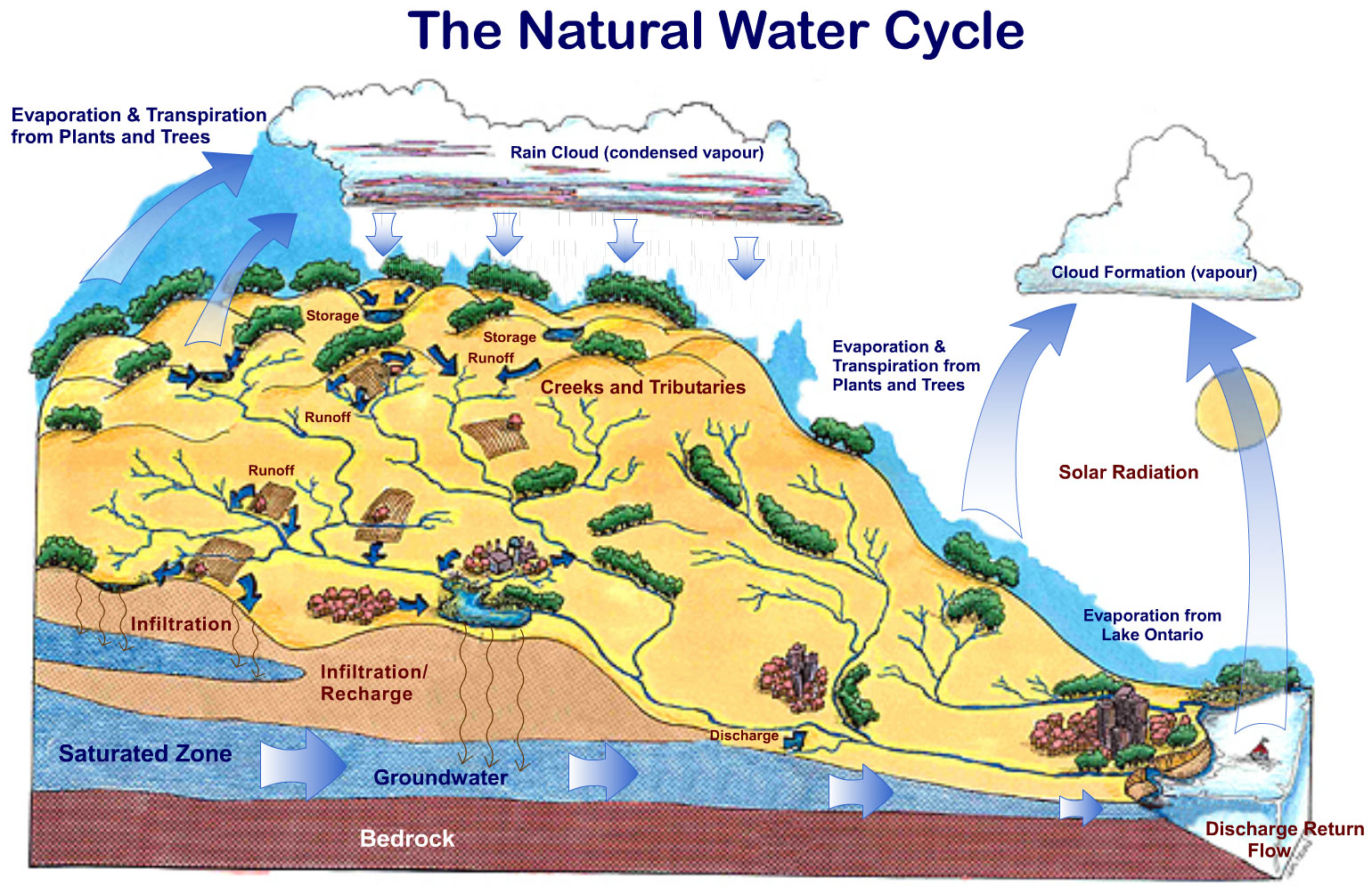What is Source Water?
Source water is untreated water taken from lakes, rivers and underground aquifers for drinking.
Source water is untreated water taken from lakes, rivers and underground aquifers for drinking.
Drinking Water Source Protection (DWSP) is simply protecting our drinking water sources from contamination or overuse. The Government of Ontario has made a commitment to ensure that every watershed in the province has a source protection plan.
A watershed is the area of land that drains into a common river or stream. Water in its natural state (solid, liquid, gas, etc.) is vulnerable to contamination or depletion, depending on activities within its watershed.
Within each watershed, a source water protection plan has been developed and is being used to promote groundwater recharge, keep drinking water sources clean and encourage wise use of our water resources.

DWSP safeguards public health by protecting drinking water supplies. DWSP is a preventative approach and is a more cost effective means of protecting drinking water than water treatment alone. Many rural areas do not have access to municipal treatment measures, so for these people, Drinking Water Source Protection may be the only barrier they have against drinking water contamination.
Everyone can help to protect water at its source. The choices we make range from individual actions, such as taking used engine oil and other household hazardous wastes to proper disposal sites, to collective efforts by everyone working together to implement and adhere to policies of the watershed-based source protection plans.
For more information see Protecting Your Water.
Conservation Authorities have a long history of working with landowners, farmers and municipalities in a mutually acceptable and respectful way and that is not going to change. We all need to work together to protect our water. Conservation Authorities already collect data, carry out studies, map resources and monitor the state of our watersheds daily.
Conservation Authority staff do not enter onto private property without permission and will continue to seek permission of property owners prior to entering their land to monitor etc. Power of entry on private property will only be used when absolutely needed.